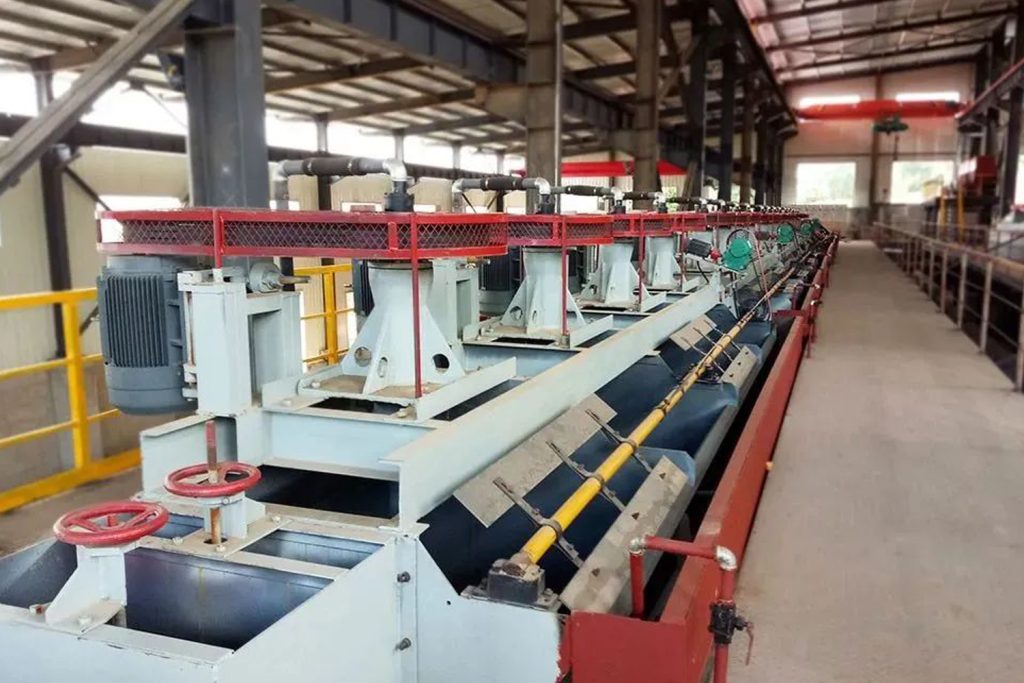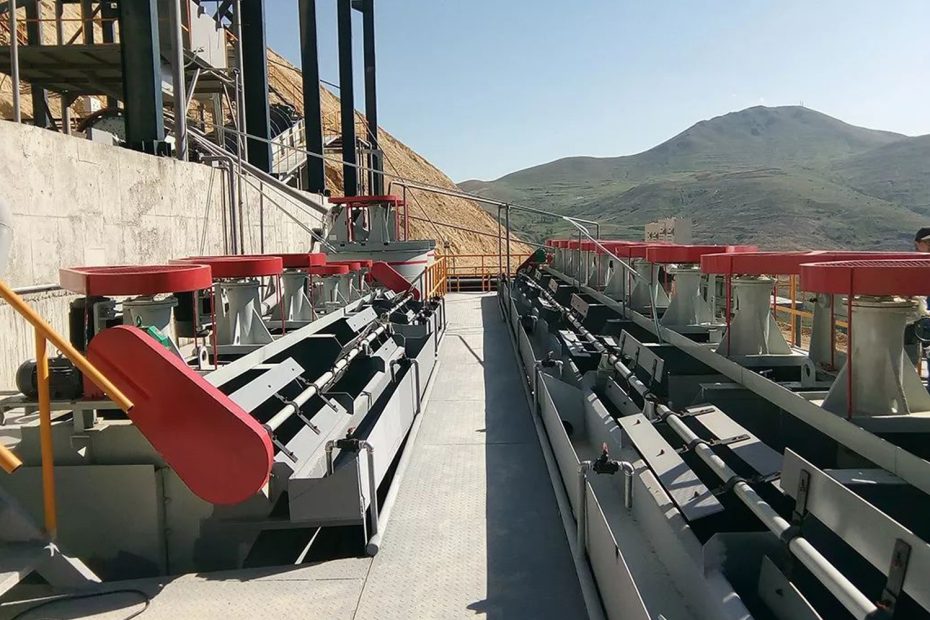Flotation is a complex mineral processing that involves a variety of technological and operational factors. How to ensure stable and efficient operation of the flotation stage is one of the important issues of the flotation mineral processing plant. The flotation production operation mainly includes the control of middling ore circulation, the judgment of the change of flotation foam properties, and the adjustment of the air filling amount of the flotation machine and the slurry level. In this article, we will teach you to master flotation production operations from these three aspects.
Control of Circulation Amount in Flotation
Medium ore circulation is an important factor in the flotation stage, which is directly related to the smoothness and stability of the flotation process. The amount of medium ore circulation should be determined according to the nature of the ore. Generally speaking, ore with severe oxidation and alteration is prone to produce slime during the grinding stage. At this time, the minerals or associated organisms that have been dissociated in the middle ore are covered by the slime, which will pollute the optional minerals that have just entered the flotation operation. On the particle surface, this kind of ore should choose open circuit flotation or reduce the middle ore circulation during flotation.
Flotation and mining circulation should generally be controlled within the range of 25% to 40%. Under the requirement of higher recovery rate, the circulation amount can be increased appropriately. Under the requirement of higher concentrate grade, it is necessary to appropriately reduce the medium ore circulation volume.
Judgment of Flotation Froth Property Change
Flotation foam properties include foam color, foam layer thickness, foam size, foam surface virtuality, foam merger, stability, fluidity, and the sound of foam scraping, etc. From these properties, it can be judged whether the selectivity of the ore is good or not and whether the control of other process conditions is suitable. Among them, the thickness of the foam layer is closely related to factors such as the amount of gas inflated and the dosage of chemicals. If the foam layer is too thick, the recovery rate will decrease and the concentrate grade will increase.
The observation of the state of the flotation foam is to observe the state changes of the color and size of the foam in the working area of a rough selection stage, a fine selection stage, and a sweeping stage. Take the foam layer in the first stage of rough selection as an example. The foam layer in the first stage of rough selection is generally thicker, darker in color, uniform in size, and can flow smoothly. The foam is stable and non-sticky. There are obvious changes from the first tank to the last tank, and there is a swishing sound when the foam is scraped into the foam tank. At this time, the thickness of the foam layer is generally between 100~300mm, and the thickness of the foam layer for the selection operation is between 300~500mm.

Adjustment of air filling volume of flotation machine and slurry level
Air is one of the important media in the flotation process. The minerals in the slurry can form a stable flotation carrier foam after sufficient aeration and chemical mineralization treatment. Excessive aeration will lead to aggravation of mineral oxidation, thereby reducing the buoyancy of minerals. Appropriate air volume can keep the foam layer in the flotation machine stable without turning over. The specific situation needs to be determined according to the operating performance of the flotation machine. Generally, medium or low air volume can be used to effectively improve the flotation recovery rate.
For the self-priming flotation machine, except for the pulp flotation machine in the first tank, the intake pipes of other flotation machines operating in the same row cannot be completely closed. For large-scale flotation machines, the adjustment of the air volume of the flotation machine and the slurry level should be based on fine-tuning, so that a relatively thick foam layer and a stable foam area can be formed in the flotation machine. To control the thickness of the flotation foam layer in the first roughing cell, the amount of air should be adjusted first, and the other cells should be determined according to the actual production situation.
In conclusion
The above are the three major flotation mineral processing production operations. The flotation operation is practical. Before the flotation operation, you should understand the performance and characteristics of the equipment in the flotation operation in detail, give full play to the advantages of the equipment, and achieve fast harvesting and early harvesting, and quick harvesting and multiple harvesting, so as to improve the flotation selection index. In actual production, flotation operators need to observe and analyze repeatedly to improve their identification ability.
